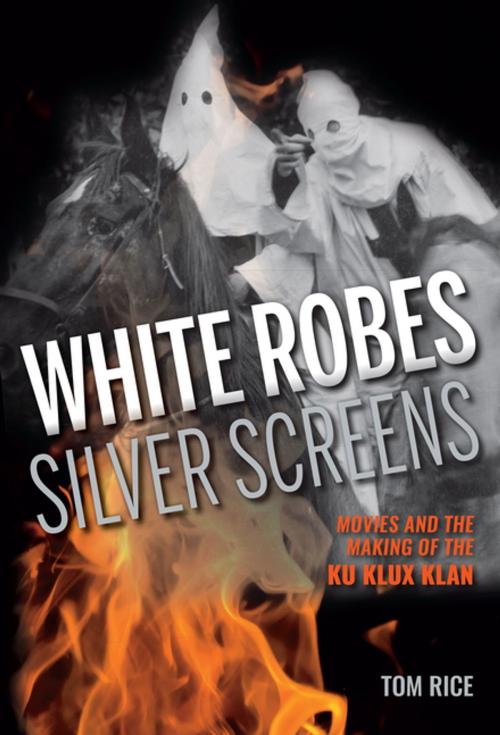White Robes, Silver Screens
Movies and the Making of the Ku Klux Klan
Nonfiction, Entertainment, Film, History & Criticism, Performing Arts, History, Americas, United States, 20th Century| Author: | Tom Rice | ISBN: | 9780253018489 |
| Publisher: | Indiana University Press | Publication: | January 4, 2016 |
| Imprint: | Indiana University Press | Language: | English |
| Author: | Tom Rice |
| ISBN: | 9780253018489 |
| Publisher: | Indiana University Press |
| Publication: | January 4, 2016 |
| Imprint: | Indiana University Press |
| Language: | English |
The Ku Klux Klan was reestablished in Atlanta in 1915, barely a week before the Atlanta premiere of The Birth of a Nation, D. W. Griffith’s paean to the original Klan. While this link between Griffith's film and the Klan has been widely acknowledged, Tom Rice explores the little-known relationship between the Klan’s success and its use of film and media in the interwar years when the image, function, and moral rectitude of the Klan was contested on the national stage. By examining rich archival materials including a series of films produced by the Klan and a wealth of documents, newspaper clippings, and manuals, Rice uncovers the fraught history of the Klan as a local force that manipulated the American film industry to extend its reach across the country. White Robes, Silver Screens highlights the ways in which the Klan used, produced, and protested against film in order to recruit members, generate publicity, and define its role within American society.
The Ku Klux Klan was reestablished in Atlanta in 1915, barely a week before the Atlanta premiere of The Birth of a Nation, D. W. Griffith’s paean to the original Klan. While this link between Griffith's film and the Klan has been widely acknowledged, Tom Rice explores the little-known relationship between the Klan’s success and its use of film and media in the interwar years when the image, function, and moral rectitude of the Klan was contested on the national stage. By examining rich archival materials including a series of films produced by the Klan and a wealth of documents, newspaper clippings, and manuals, Rice uncovers the fraught history of the Klan as a local force that manipulated the American film industry to extend its reach across the country. White Robes, Silver Screens highlights the ways in which the Klan used, produced, and protested against film in order to recruit members, generate publicity, and define its role within American society.















